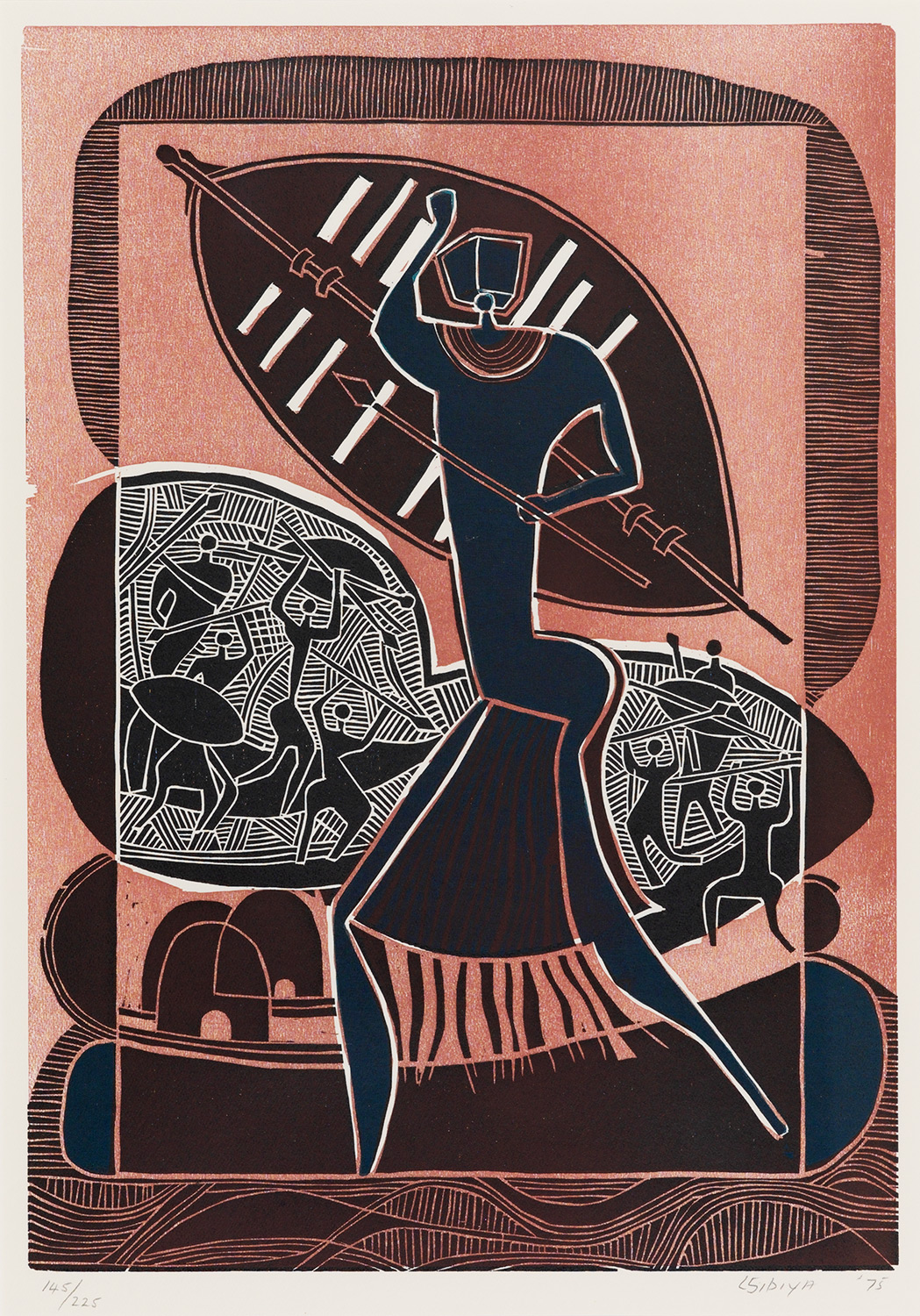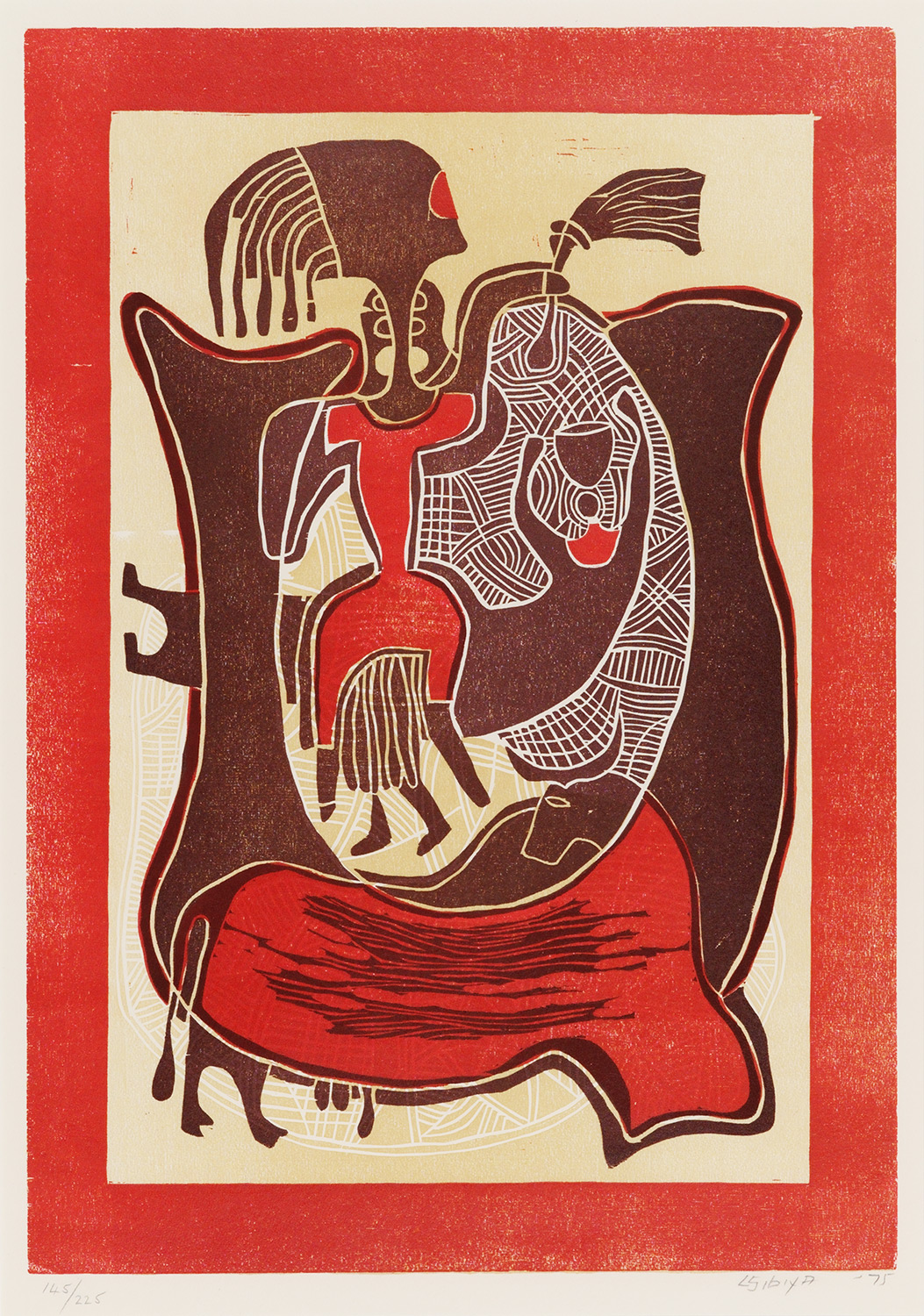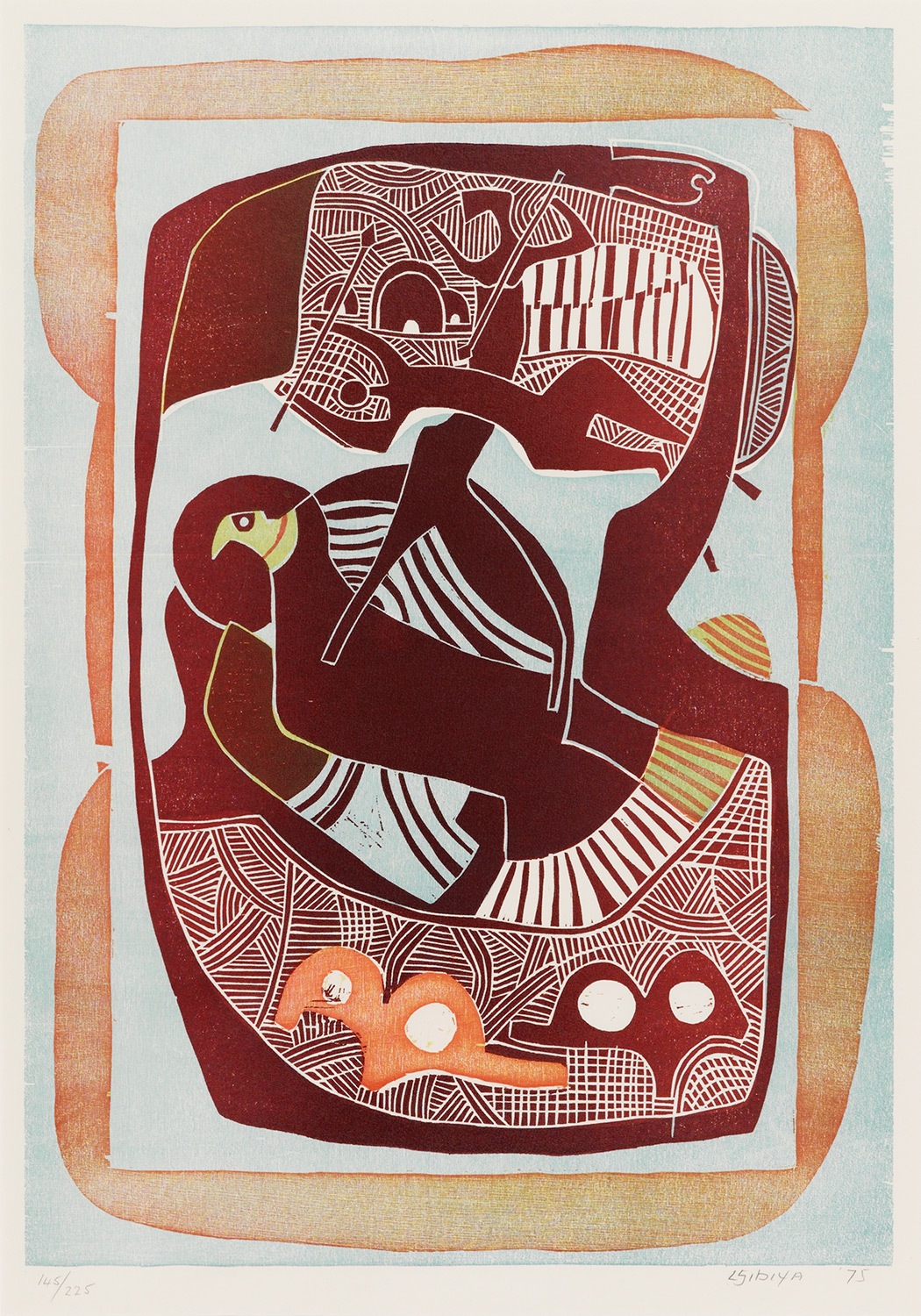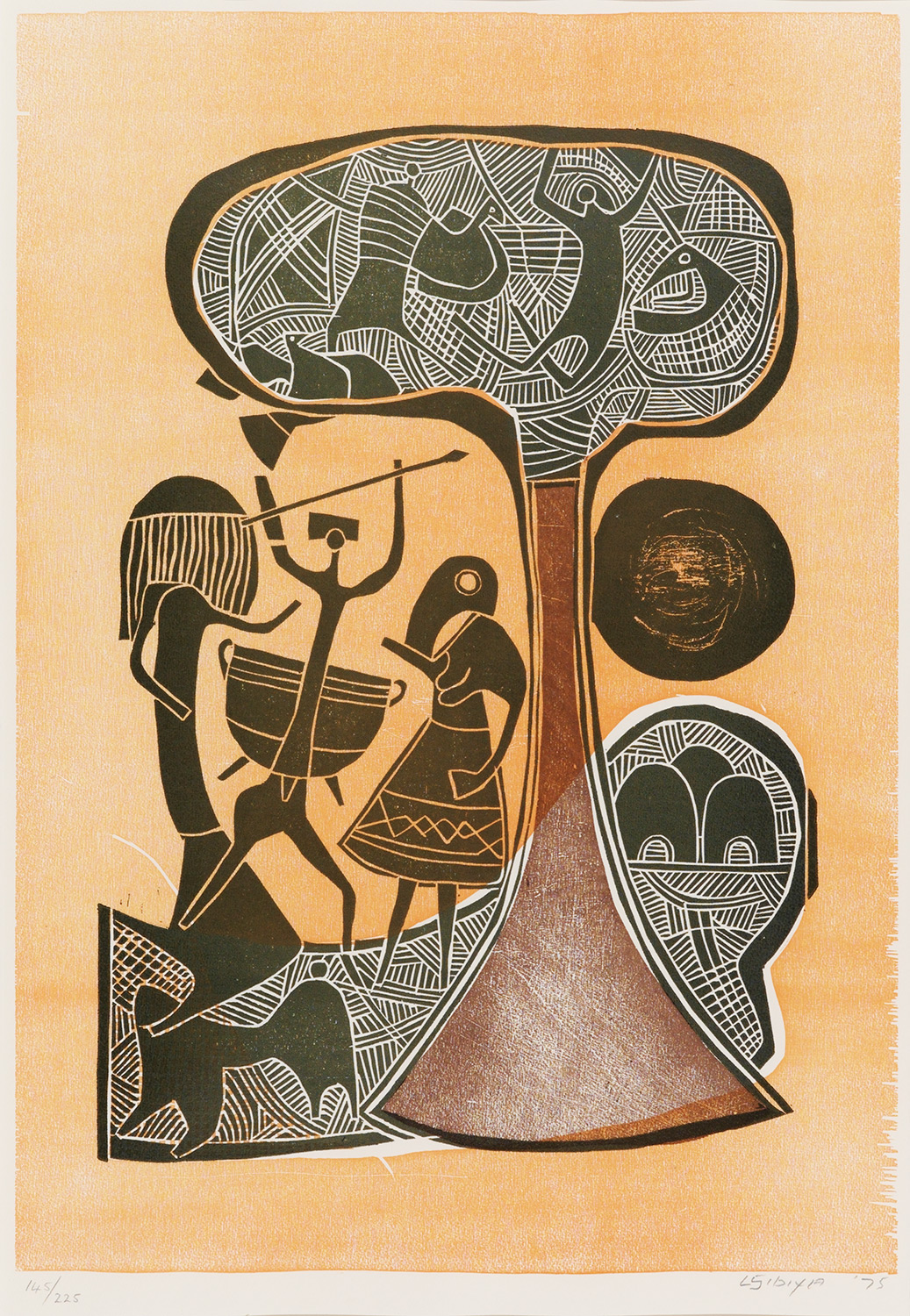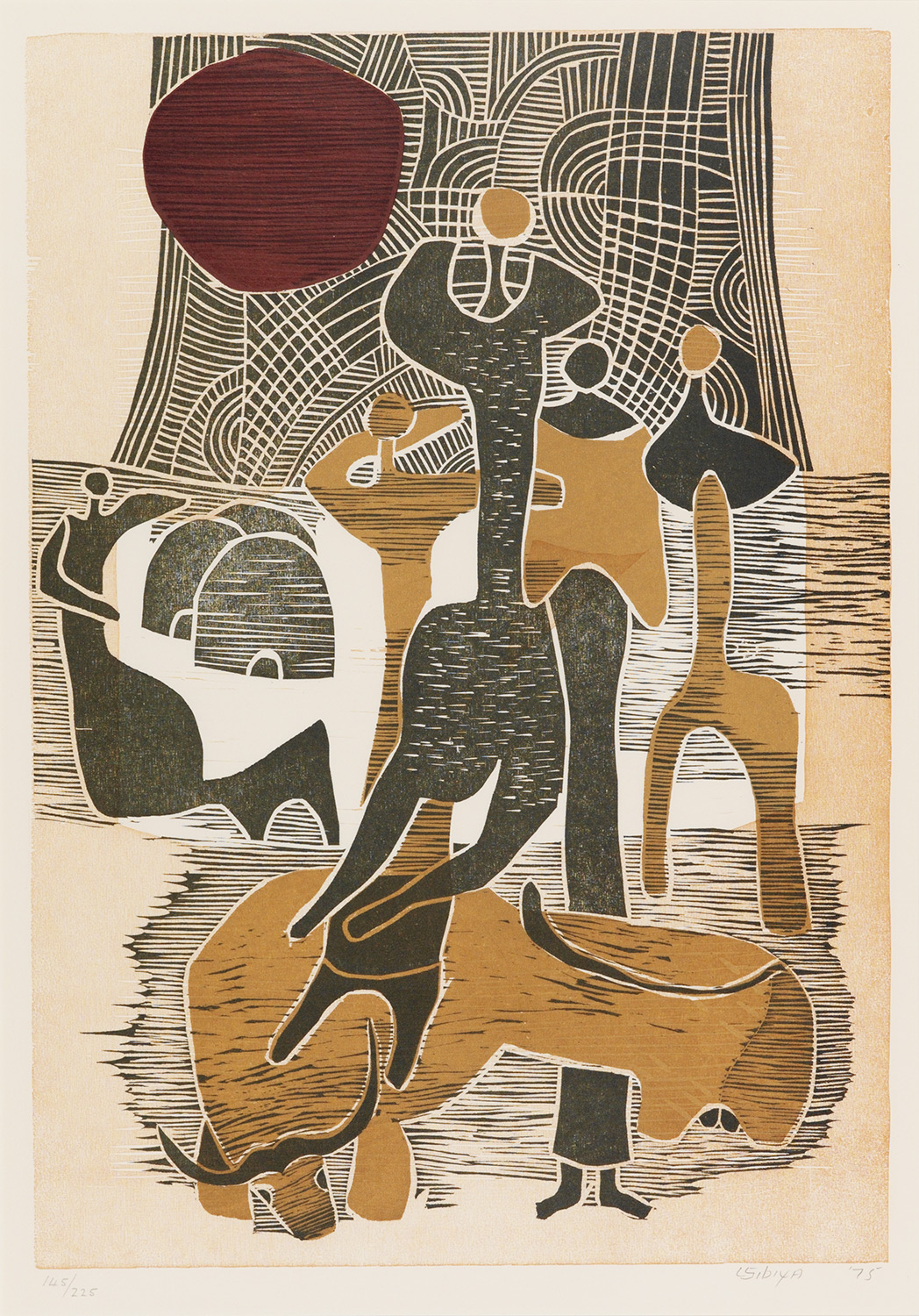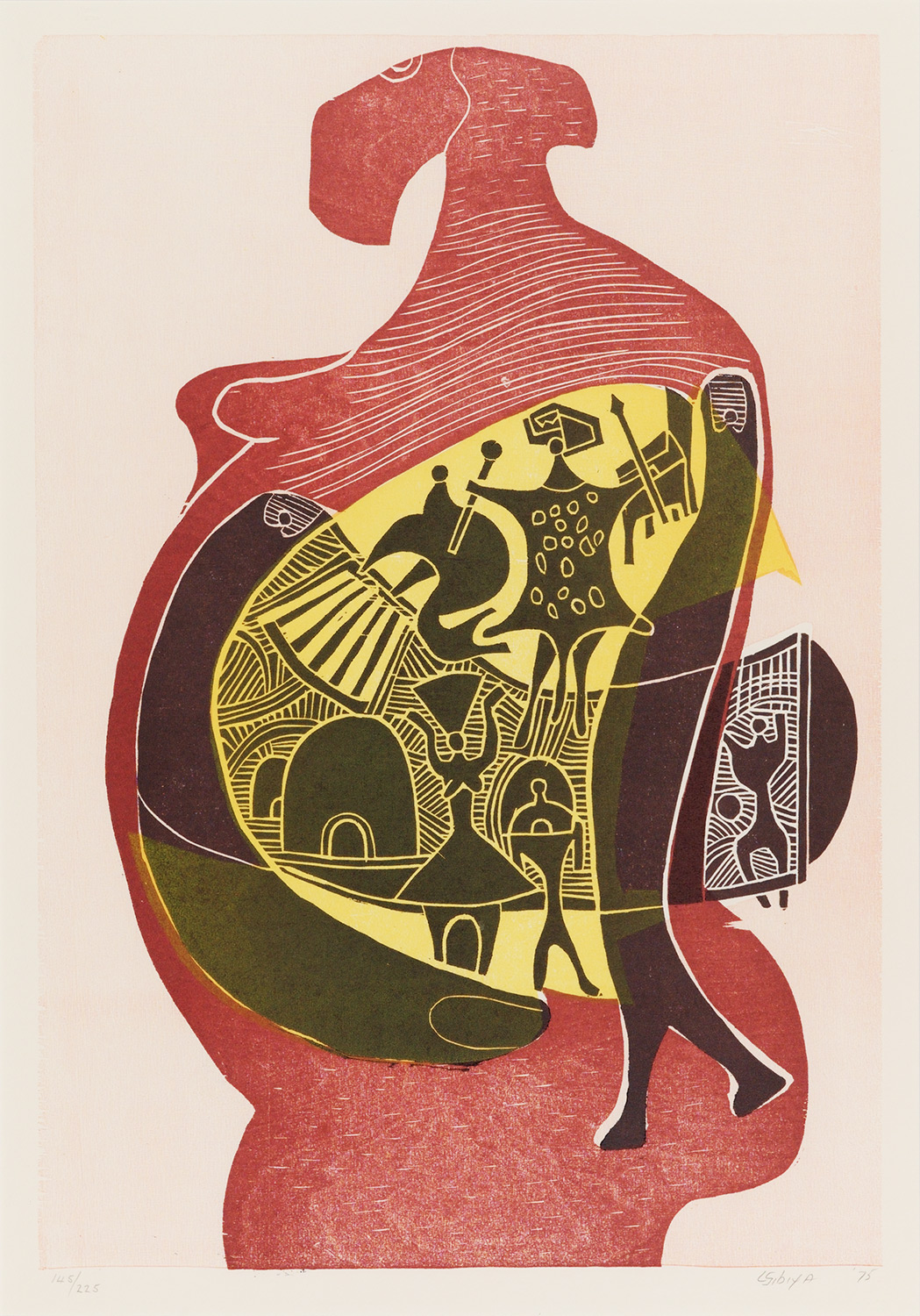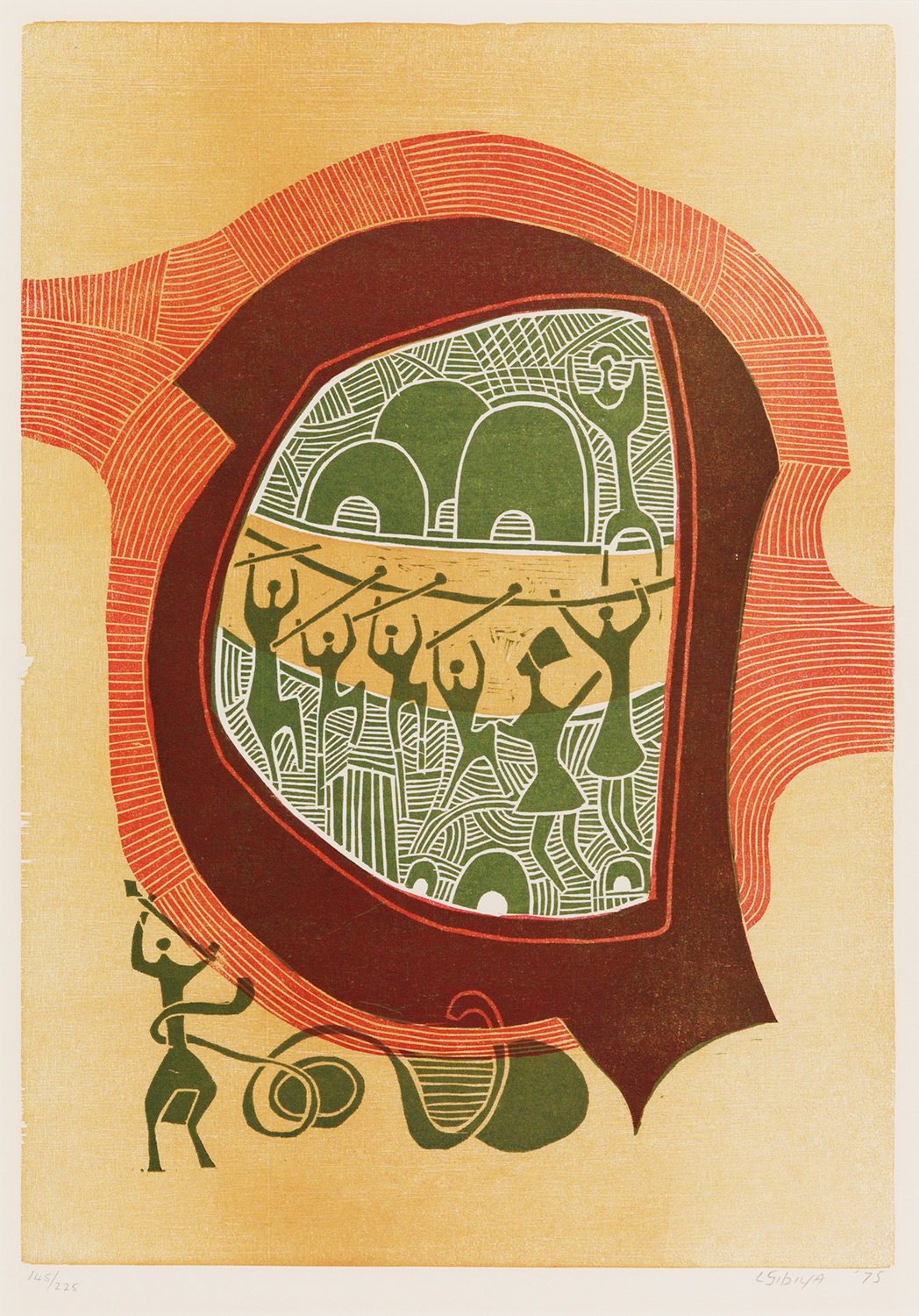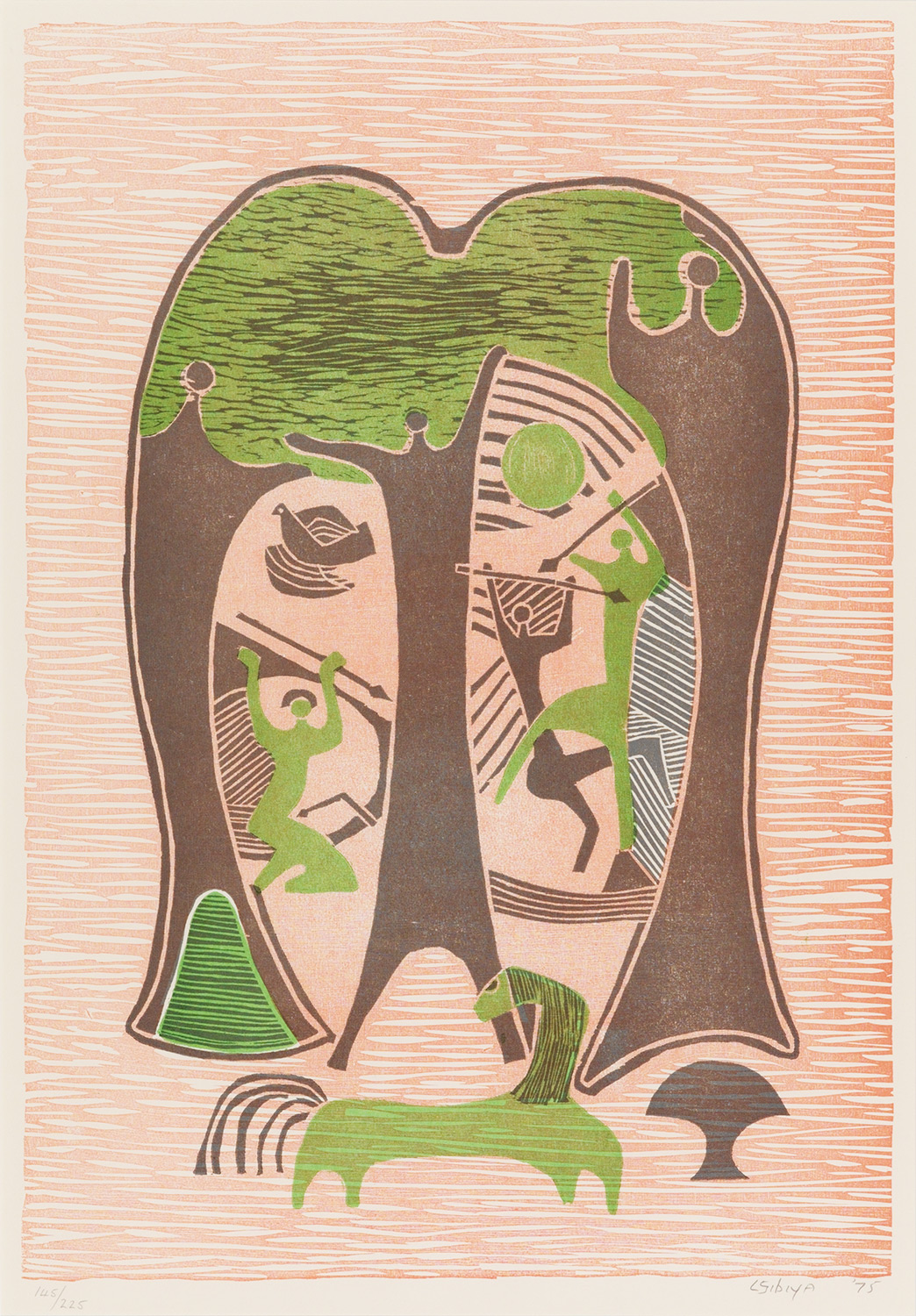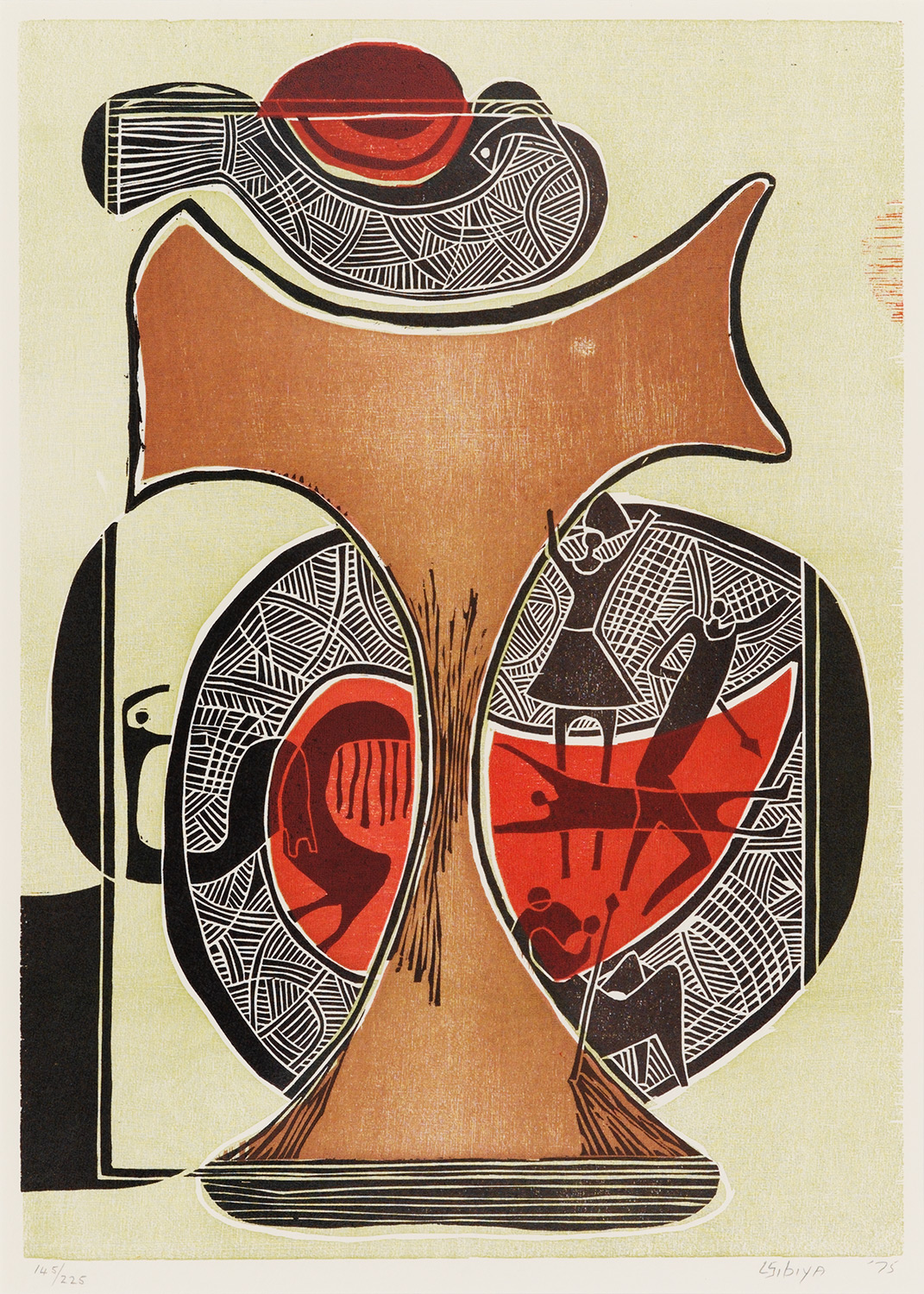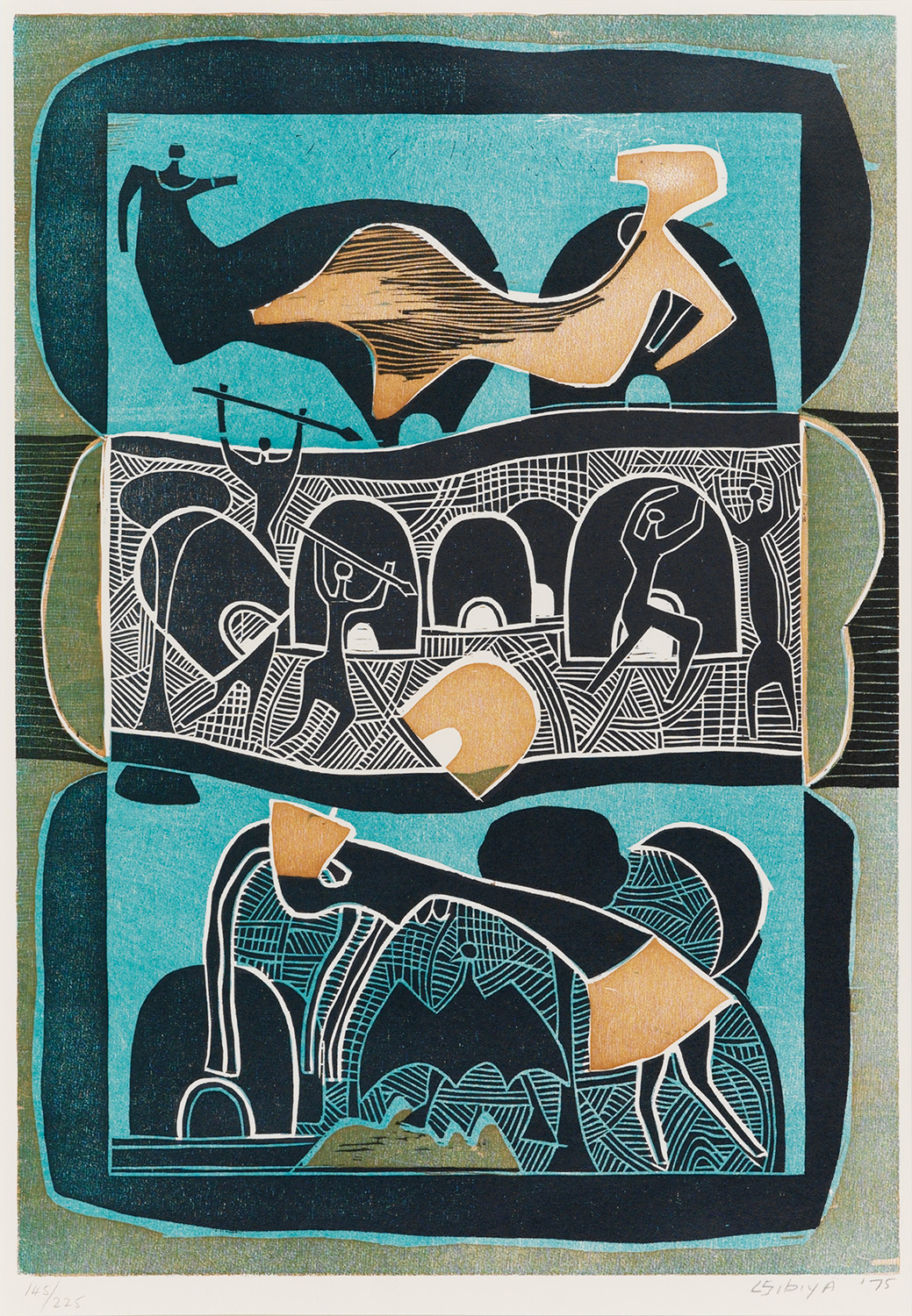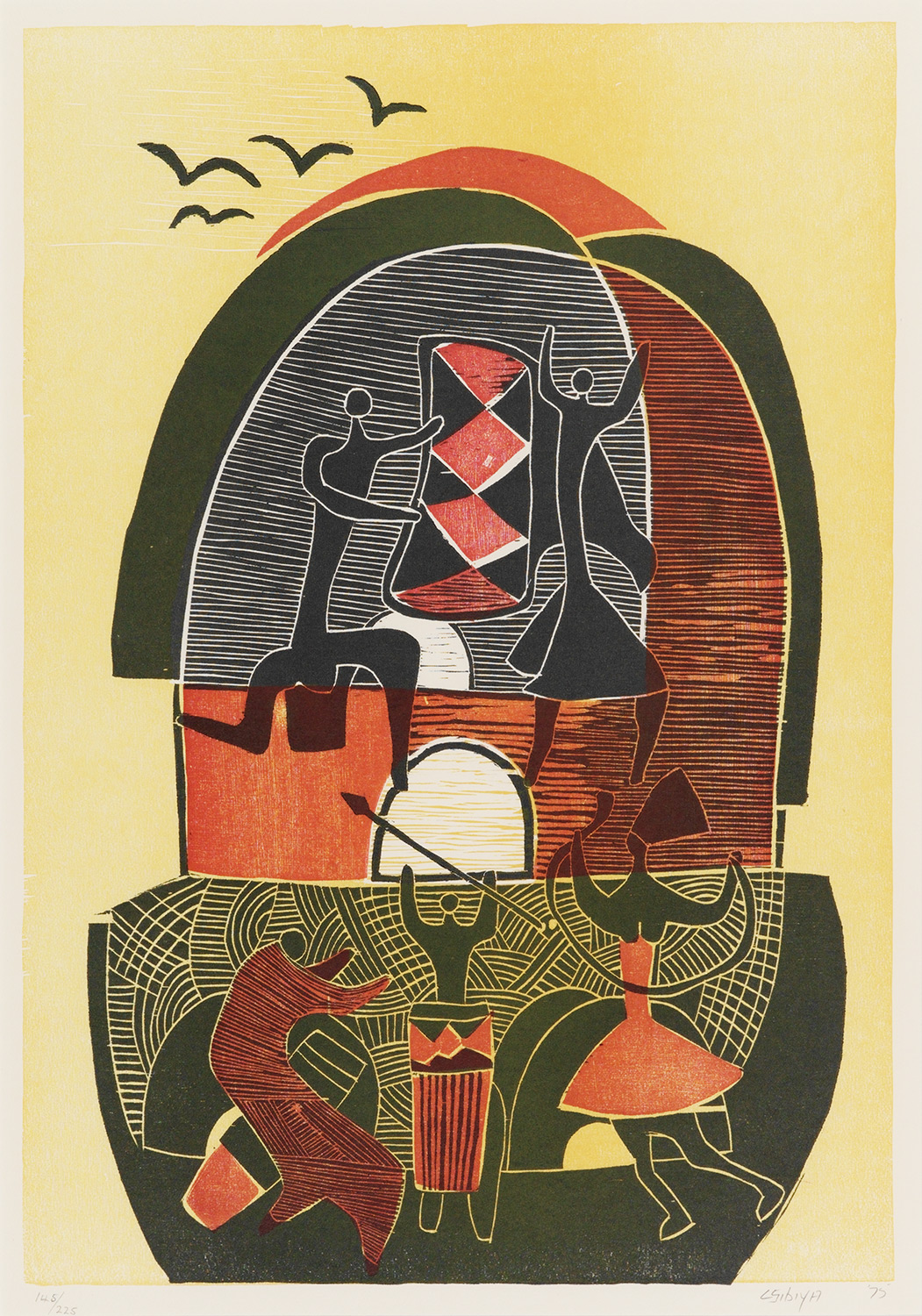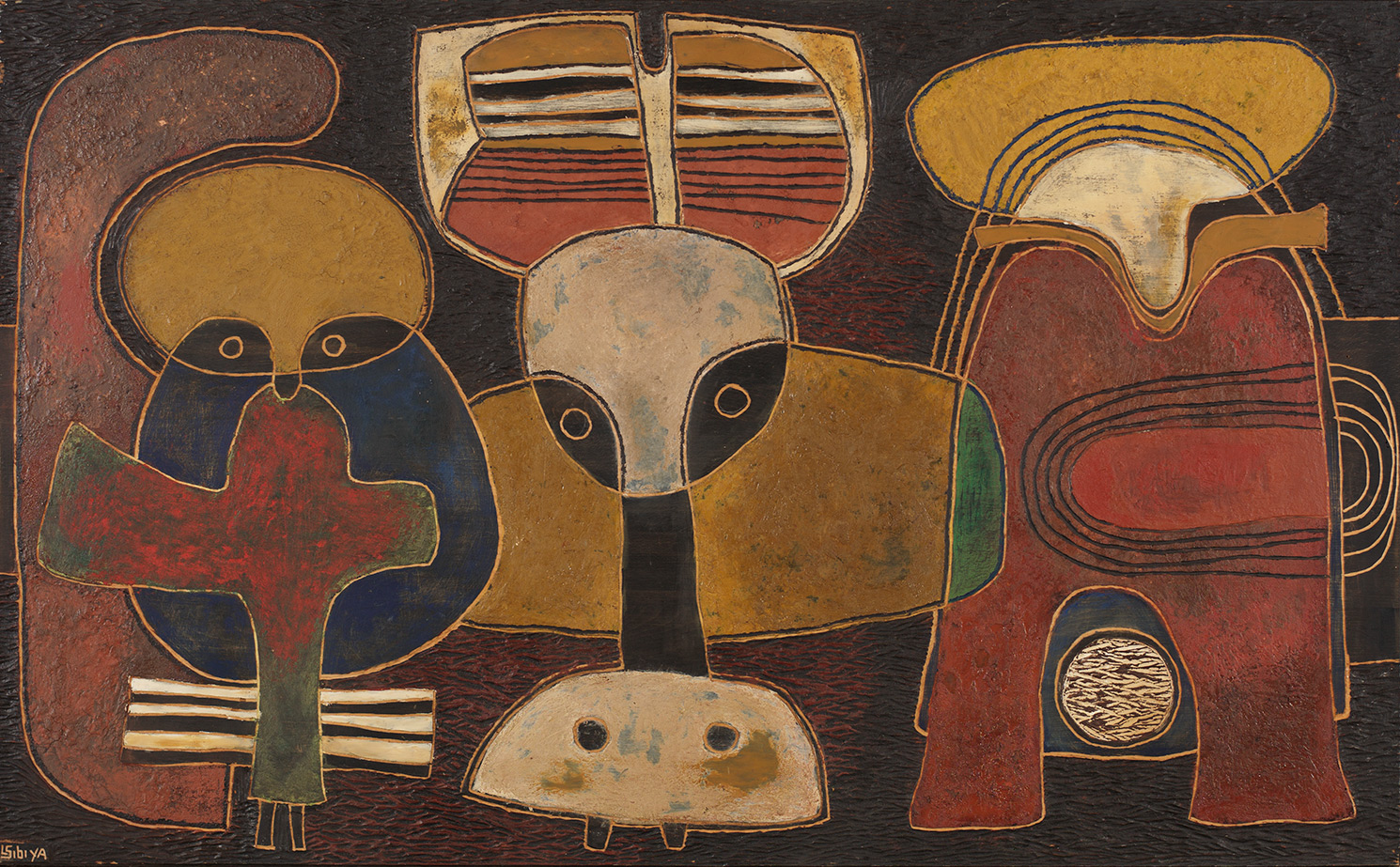lucky madlo sibiya (1942 – 1999)
BIOGRAPHY
Lucky Madlo Sibiya was the son of a medicine man and a descendant of Chief Bambatha, but despite this noble lineage, his family was poor. His father had nine mouths to feed.
Sibiya never received formal training in the field of art. Instead, his introduction to art came in an unusual way. Sibiya’s father was a sangoma and, as a child, Sibiya spent most of his time watching his father performing rituals, throwing bones on the floor—an essential aspect of the consultation. The shape of the bones and their patterns fascinated the young Sibiya and were later to inspire his artworks.
When he was 11 years old, his family moved to Sophiatown and, later, to Soweto, where he attended the St. Peter’s Seminary.
As a youngster, he was introduced to the artist Cecil Skotnes, who took him on as a private pupil. Skotnes introduced him to the wood panel and later the coloured woodcut and Sibiya soon became known as an engraver. Ndebele designs and colour use are prominent in his work.
Sibiya made panels, serigraphs, colour woodcuts and free sculpture in wood, bone and metal. His panels were cut in shallow relief and embellished with paint, and presented as finished objects in themselves. In certain areas of the panels he applied the different colours in layers so that the under-colour shines through, picking up light when correctly displayed.
He is renowned for his abstract paintings and sculptural carvings. He mastered the art of reinventing the discarded by incorporating, for example, scraps of broken piano, pieces of leather, wood, fabric and metal into his work. Central to nearly all his compositions is the human figure. Other recurring motifs include animals, birds, fish, and cattle.
For many years, Sibiya lived at Hammanskraal outside Pretoria, where he worked in his studio.
He held his first solo exhibition at Gallery 101 in Johannesburg in 1971. He had various solo exhibitions in South Africa, but also exhibited in Swaziland and the United Kingdom.
In 1974, he visited Europe and the United States.
His works is represented in various private and public collections in South Africa, Australia, the United Kingdom and the United States.
Sibiya also supported other artists by collecting their work and involving himself in informal teaching and sharing his creative inspiration and expertise with young artists.


